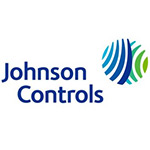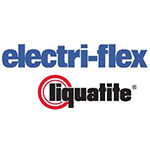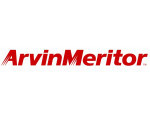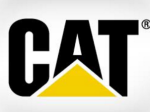What is Make-Up Air?
REPLACEMENT AIR = MAKE-UP AIR
Air will enter a building in an amount to equal the flow rate of exhaust air whether or not provision is made for this replacement. However, the actual exhaust & supply flow rate will be less than the design requirements of the plant when it is under negative air pressure. If the building perimeter is fairly tightly constructed, thus blocking effective infiltration of outside air, a severe decrease of the exhaust flow rate will result and many other problems may occur.
When a building is in a negative air condition, the resultant in-plant environmental condition is undesirable since the influx of cold outside air chills the perimeter of the building. Workers are subjected to drafts, workspace temperatures are not uniform, and the building heating system is usually overtaxed. Although the air may eventually be tempered to acceptable condition by mixing as it moves toward the building interior, this is an ineffective way of transferring heat to the air and usually results in greater fuel usage. Using EnergyMaster patented distribution system ducts will enable the make-up air system to utilize the otherwise wasted heat that is stratified at the ceiling.
Experience has shown replacement air is necessary for the following reasons:
-
The proper operation of exhaust hoods: The lack of sufficient make up air and a negative air pressure causes an increase of the static pressure in which the exhaust fans must overcome. This causes a reduction in the “cubic feet per minute” (CFM) of air from all exhaust fans. THE RESULT: NEGATIVE AIR PRESSURE.
-
To eliminate high velocity cross-drafts through windows and doors:
Depending on the negative pressure created, cross-drafts may be substantial. Cross-drafts not only interfere with the proper operation of exhaust hoods, but also may disperse contaminated air from one section of the building to another and can interfere with the proper operation of process equipment such as open top solvent degreasers. In the case of dusty operation, settled material may be dislodged from surfaces and result in recontamination of the work area.
-
To ensure operation of natural draft stacks such as atmospheric burner and other combustion flues: Moderate negative pressures can result in back drafting of flues which may cause a dangerous health hazard from the release of combustion products, principally carbon monoxide, into the work area. Back rafting may occur in natural draft stacks at negative pressures as low as 0.02” Water Gauge (See Table 7-2). Secondary problems include difficulty in maintaining pilot lights in burners, poor operation of temperature controls, corrosion damage in stacks and heat exhausters due to condensation of water vapor in the flue gases.
|
NEGATIVE PRESSURES WHICH MAY CAUSE UNSATISFACTORY CONDITIONS WITHIN BUILDINGS (Table 7-2) |
|
| Negative Pressure Inches of Water | Adverse Conditions Which May Result |
0.01 to 0.02 |
Worker Companies-High velocity drafts through doors,window and crack openings. |
0.01 to 0.05 |
Natural Draft Inoperable-Ventilation through exhaust ventilators, flow through stacks with natural draft greatly reduced. |
0.02 to 0.05 |
Carbon Monoxide Exposure-Black drafting atmospheric burners will take place in water heaters, unit heaters, furnaces and other combustion equipment not provided with induced draft. |
| 0.03 to 0.10 | Mechanical Ventilation Greatly Reduced-Airflow amounts reduced in propeller fans and exhaust system. |
0.04 to 0.10 |
Doors Difficult to Open – Employee injury may result from non-checked slamming doors. |
0.10 to 0.25 |
Local Exhaust Ventilation Reduced- Centrifugal fan fume exhaust flow reduced. Exhaust hood source capture zones greatly reduced. |
-
To eliminate cold drafts on workers: Drafts not only cause discomfort and reduce working efficiency but also may result in lower overall floor temperatures.
-
To eliminate differential pressure on doors: High differential pressures make doors difficult to open or shut and, in some instances, can cause personnel safety hazards. (SEE Table 7-2)
-
To conserve fuel: Without adequate replacement air, uncomfortable cold conditions near the building perimeter frequently lead to the installation of more heating equipment in those areas in an attempt to correct the problem. These heaters take excessive time to warm the air and the over-heated air moving toward the building interior and up to the ceiling makes those areas uncomfortably warm. These, in turn, usually lead to the installation of more exhaust fans to remove the excess heat, further aggravating the problem by increasing the hot air at the ceiling. Heat is wasted without curing the problem.
REPLACEMENT AIR FLOW RATE
In most cases, replacement airflow rate should approximate the total airflow rate of air removed from the building by exhaust ventilation systems, process systems and combustion process. Determination of the actual flow rate of air removed usually requires an inventory of air exhausters. When conducting the exhaust inventory is necessary not only to determine the quantity of air removed, but also the need for a particular piece of equipment. At the same time, reasonable projections should be made of the total plant exhaust requirements for the next one to two years, particularly if process changes or plant expansions are contemplated. In such cases, it can be practical to purchase slight more replacement air than what is immediately necessary with the knowledge that the increased capacity will be required within a short time. The additional cost of a larger unit is relatively small.
Having established the minimum air supply quantity necessary for replacement air purposes, many plants have found that it is wise to provide an additional supply air flow rate to establish a positive air pressure.This will overcome natural ventilation leakage and further eliminate drafts at the perimeter of the building.
Source : Industrial Ventilation – A manual of recommended practice 21st Edition, American Conference of Government Industrial Hygienists
Click Here to See How EnergyMaster® Works
Click Here to See How SeasonMaster® Works






